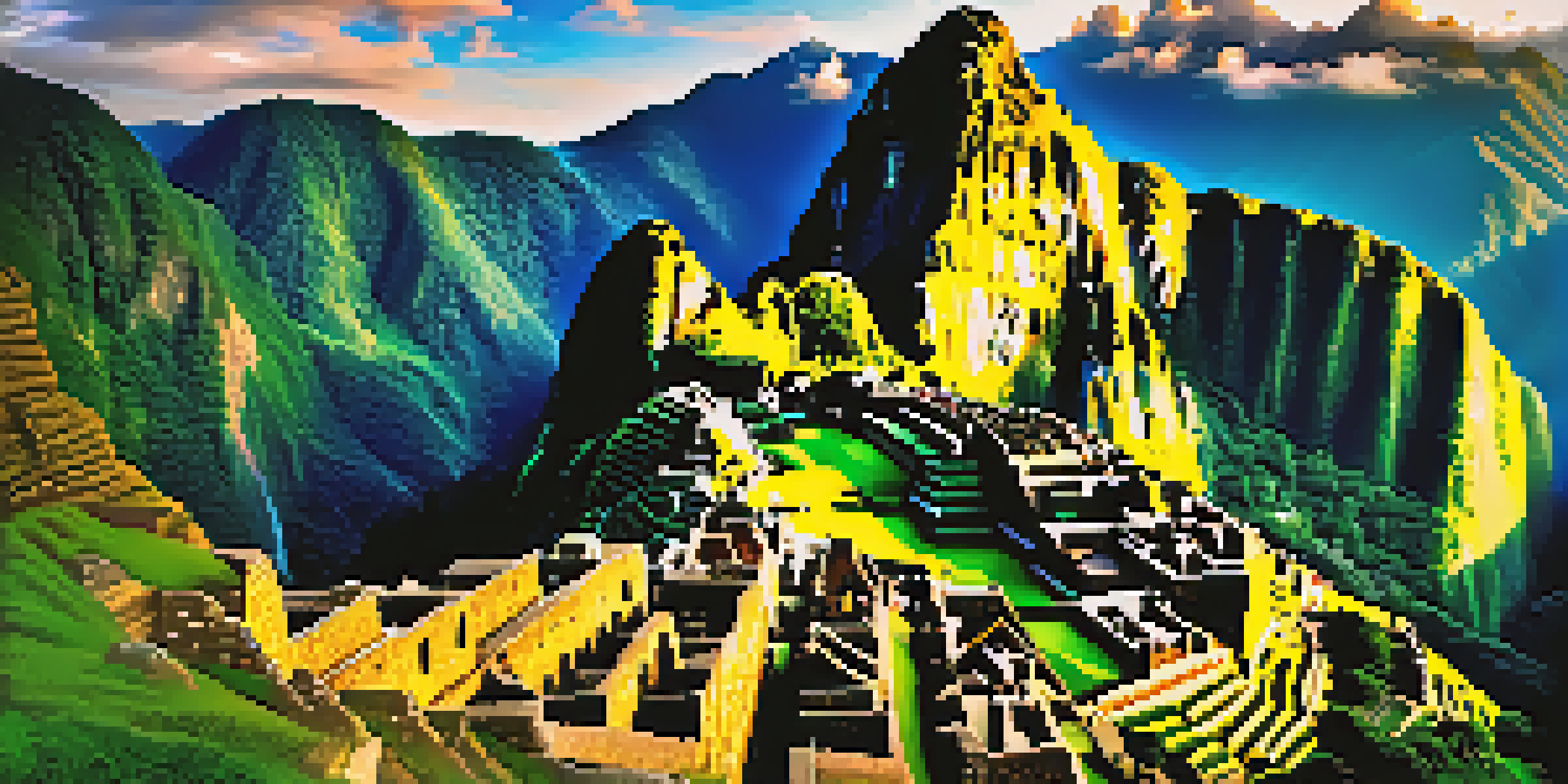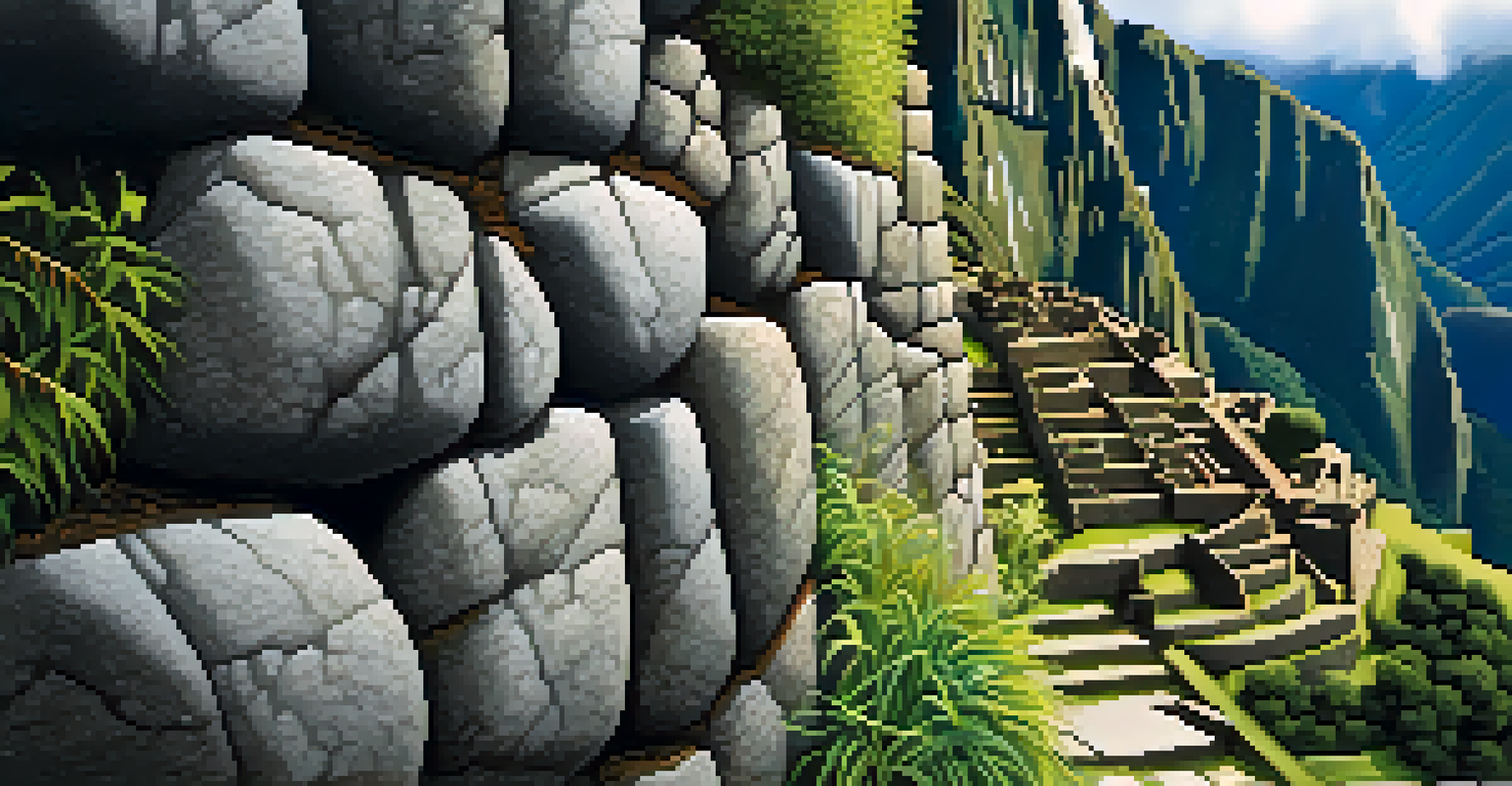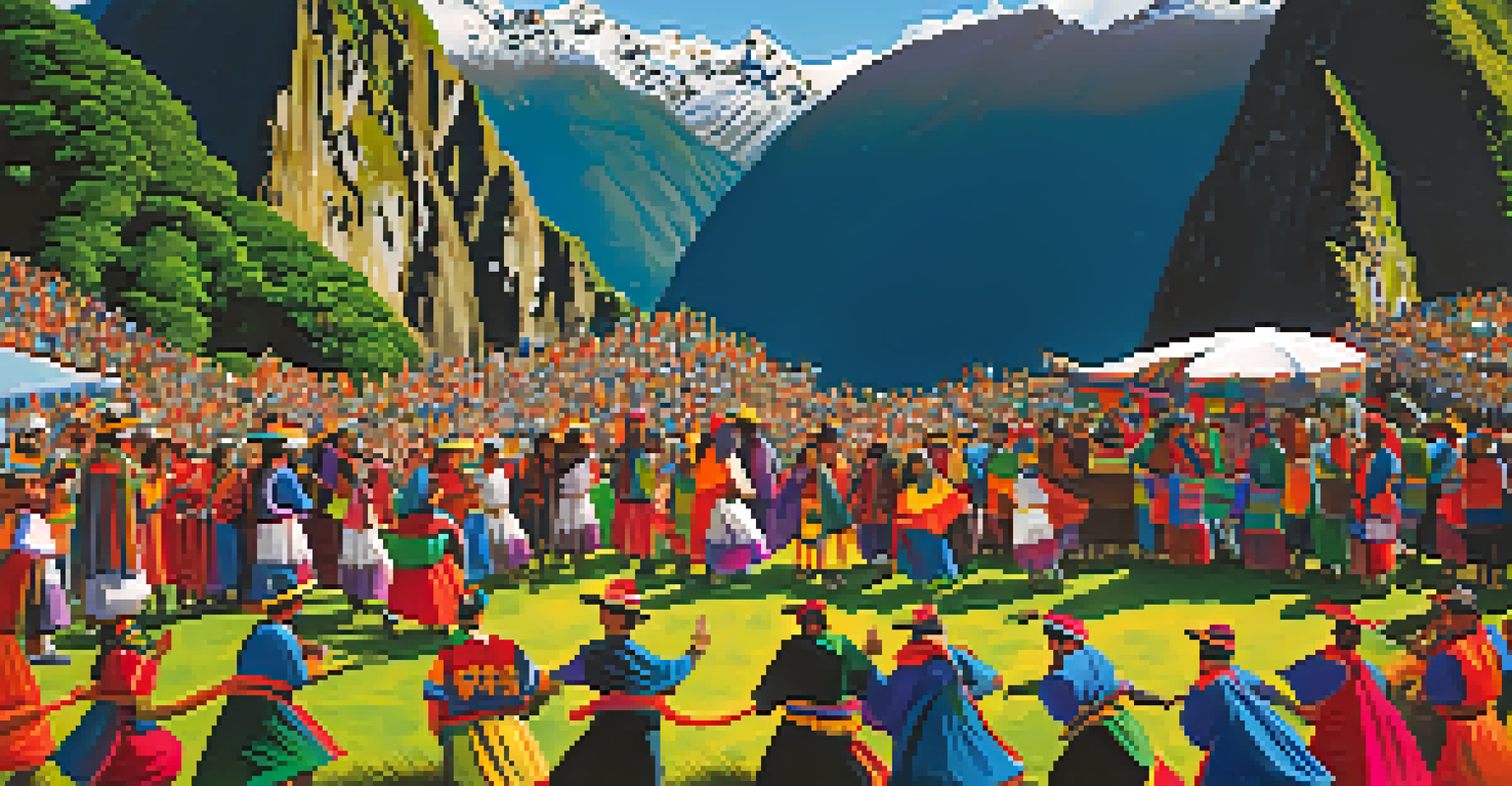Machu Picchu: A Gateway on Historical Trade Routes

Introduction to Machu Picchu's Historical Significance
Machu Picchu is not just a stunning archaeological wonder; it’s also a key piece of history. Nestled high in the Andes, this ancient Incan city served as a crucial waypoint along various trade routes. Understanding its role in trade helps us appreciate its strategic location and cultural importance in the region.
Machu Picchu is a place of wonder, and a testament to the ingenuity of the Inca civilization.
The site, often referred to as the 'Lost City of the Incas,' was more than a royal estate; it facilitated trade between different regions of the Inca Empire. Merchants and travelers would navigate through rugged terrains, relying on Machu Picchu as a resting point. Its design reflects the Incas' advanced understanding of agriculture, architecture, and logistics.
By exploring Machu Picchu, we not only admire its breathtaking views but also recognize its integral place in connecting communities. The trade routes it supported fostered economic growth and cultural exchange, weaving a rich tapestry of history that continues to captivate us today.
Geographical Advantages of Machu Picchu
One of the most remarkable aspects of Machu Picchu is its geographical positioning. Set atop a mountain ridge, it overlooks the Urubamba River, providing natural protection and visibility. This strategic location made it an ideal spot for trade, as it controlled the flow of goods through the valley.

The surrounding landscape offered diverse resources, including fertile land for agriculture and access to vital minerals. As a result, Machu Picchu became a hub for agricultural trade, allowing the Incas to thrive. The rich biodiversity of the region also meant that merchants could acquire a variety of goods to exchange.
Machu Picchu: Trade Hub of the Incas
Machu Picchu served as a crucial trade center, connecting various regions of the Inca Empire and facilitating economic growth and cultural exchange.
Moreover, the Inca road system, which connected various settlements, facilitated movement to and from Machu Picchu. This network allowed traders to transport products efficiently, further enhancing the city’s role as a commercial center.
The Inca Road System and Its Impact on Trade
The Inca Empire was renowned for its extensive road system, which spanned thousands of miles. This network was crucial for trade, communication, and military movement. Machu Picchu was strategically placed along these routes, making it a key junction for traders.
Trade is the lifeblood of civilization; it connects cultures and drives progress.
Traveling these roads was not without challenges, including steep inclines and unpredictable weather. However, the Incas were adept at constructing pathways that catered to their environment. The road to Machu Picchu allowed for the efficient movement of goods such as textiles, food, and crafts.
The importance of the Inca road system cannot be overstated; it facilitated not only economic exchange but also cultural interactions among diverse communities. Traders would share stories, traditions, and innovations, enriching the cultural fabric of the region.
Goods Traded Through Machu Picchu
A wealth of goods passed through Machu Picchu, showcasing the region's diverse resources. Key items included agricultural products like maize, coca leaves, and potatoes, which were staples in the Inca diet. These goods were vital not just for sustenance but also for trade with neighboring regions.
Textiles played a significant role in Inca commerce, with intricate designs that reflected cultural identities. Wool from alpacas and llamas was transformed into clothing, blankets, and other goods that were highly sought after. The craftsmanship involved illustrated the artistic talents of the Incas.
Geographical Advantages Enhance Trade
Its strategic mountain location and access to diverse resources allowed Machu Picchu to thrive as a commercial center.
Additionally, precious metals like gold and silver were exchanged, demonstrating the wealth and power of the empire. The trade of these resources helped maintain the Inca's dominance and facilitated the flow of wealth throughout the region.
Cultural Exchange at Machu Picchu
Machu Picchu was not only a trade hub but also a melting pot of cultures. As merchants and travelers converged, they exchanged more than just goods; they shared ideas, traditions, and practices. This cultural exchange enriched the lives of the inhabitants and travelers alike.
Festivals and gatherings often took place at Machu Picchu, drawing people from various regions. These events celebrated agricultural cycles, religious rituals, and community bonding, fostering a sense of unity among diverse groups. The blending of cultures contributed to the richness of Incan society.
Over time, the interactions at Machu Picchu created a legacy of shared knowledge and practices. This cultural amalgamation played a crucial role in shaping the social dynamics and cultural identity of the Inca Empire.
Decline of Trade and Its Effects
The decline of trade at Machu Picchu can be attributed to several factors, including the Spanish conquest in the 16th century. As the Inca Empire crumbled, so did the intricate trade networks that had flourished for centuries. This shift dramatically altered the socio-economic landscape of the region.
With the Spanish colonization, many indigenous trade practices were disrupted or eradicated. Traditional routes that once connected communities now fell into disuse, leading to a loss of cultural exchange. The once-bustling hub of Machu Picchu became largely abandoned and forgotten.
Cultural Exchange Enriches Society
The convergence of merchants and travelers at Machu Picchu fostered cultural exchanges that enriched the Incan society and its traditions.
However, this decline also paved the way for the site to become a focal point for archaeological research and tourism in the modern era. Today, Machu Picchu serves as a reminder of the rich history of trade and cultural exchange that once thrived there.
Machu Picchu: A Modern Symbol of Heritage
Today, Machu Picchu stands as a UNESCO World Heritage Site, attracting millions of visitors each year. Its historical significance as a trade hub continues to resonate, drawing attention to the importance of preserving cultural heritage. The site serves as a poignant reminder of the ingenuity of the Inca civilization.
Modern tourism has helped revitalize interest in the Inca Empire’s legacy, encouraging efforts to protect and maintain the site. As visitors explore its ancient ruins, they gain insight into the complex trade networks that once flourished here. This connection to the past enriches the travel experience.

Ultimately, Machu Picchu is more than just a tourist destination; it is a gateway to understanding the rich history of trade and cultural exchange that shaped not only the Inca Empire but also the world we live in today.